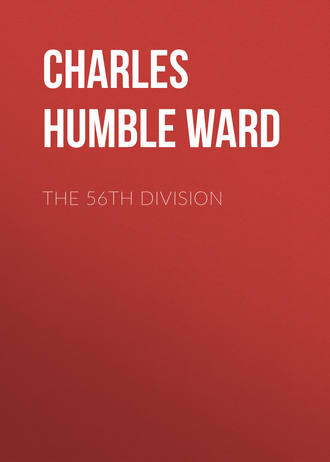 полная версия
полная версияThe 56th Division
Explosions and fires, which were continually observed at night behind the enemy lines, were more numerous on the night of 7th/8th, and when the advance was continued at 8 a.m., the two Middlesex battalions occupied the villages of Athis and Fayt-le-Franc with practically no opposition. By nightfall outposts were covering Petit Moranfayt, Trieu Jean Sart, Ferlibray, and Richon.
The road situation was worse than ever. Railhead was at Aubigny-au-Bac, and supply lorries were unable to proceed any farther than the Honnelle River owing to the destruction of the bridges. Rain fell all the time, and cross-country tracts were impassable. All traffic was thrown on the main roads, which, to the west of the river, were now in such a state that all supplies were late. Arrangements were made for aeroplanes to drop food to the advance troops, but fortunately this was found unnecessary.
The enemy was now in full retreat on the whole of the British front. To the south the Guards Division entered Maubeuge, and to the north the Canadians were approaching Mons. The 56th Division marched forward through the villages of Coron, Rieu-de-Bury, Quevy-le-Grand, and Quevy-le-Petit, and by the evening were on the line of the Mons-Maubeuge road behind a line of outposts held by the 1st London Regt.
On the 10th November the 1st Londons continued the advance, preceded by cavalry. No serious opposition was encountered until the infantry had passed through Harvengt, when heavy machine-gun fire from both flanks held up the advance. A squadron of 16th Lancers attempted to get through, but failed. The infantry then attacked and cleared the ground, entered Harmignies, and held a line to the east.
Orders were received that night that the 63rd Division would carry on the advance as advance guard to the XXII Corps, and the necessary reliefs were carried out. The artillery of the 56th Division remained in action, and were just two miles south of the spot where Brig.-Gen. Elkington was in action on the 23rd August 1914, at the battle of Mons. Gen. Hull, on the other hand, had actually held an outpost line before Harmignies with his battalion on the 22nd August, and had moved to the north to hold a line from Obourg to Mons on the 23rd. After the battle the celebrated retreat had taken him through the village of Nouvelles due west of Harmignies, and so through Quevy to Bavai, Caudray, Ham, and so on. What memories this second visit to Harmignies must have brought back to him! From retreat to victory—from a battalion to a division—Harmignies 1914, Harmignies 1918.
Brig.-Gen. Coke also fought as company commander in August 1914 within five miles of the spot where he finished in 1918.
At 7.30 a.m. on the 11th November the XXII Corps issued orders that hostilities would cease at 11 a.m. on that day, and that all troops would stand fast.
Just before 11 o’clock all batteries opened fire. Each gunner was determined to be the last man to fire a shot at the Germans. And then, in the midst of the rolling thunder of rapid fire, teams straining every nerve to throw the last shell into the breach of their gun before the “cease fire” sounded, 11 o’clock struck, the first blast of the bugles pierced the air, and with the last note silence reigned.
“There was no cheering or excitement amongst the men,” writes Brig.-Gen. Elkington. “They seemed too tired, and no one seemed able to realise that it was all over.”
G.Q.G.A. le 12 Novembre, 1918.Officiers, Sous-officiers, Soldats des Armées Alliées,
Après avoir résolument arrêté l’enemi, vous l’avez pendant des mois, avec une foi et une énergie inlassables, attaqué sans répit.
Vous avez gagné le plus grande bataille de l’Histoire et sauvé la cause la plus sacrée: la Liberté du Monde.
Soyez Fiers!
D’une gloire immortelle vous avez paré vos drapeaux.
La Postérité vous garde sa reconnaissance.
Le Maréchal de France,Commandant en Chef les Armées Alliées,F. FochThe division did not move to the Rhine, but remained in this area, with headquarters at Harvengt. They mended the roads, they drilled, and they had sports. Towards the end of January 1919 demobilisation had reached a point which rendered the division ineffective as a fighting unit.
The London Scottish were moved to the 9th Division, in Germany, on the 16th January, and the 7th Middlesex to the 41st Division on the 25th February. On the 14th March Gen. Hull gave up command of the division.
But their work was done. Officially the 56th Division returned the first cadre on the 14th May, the last on the 10th June, 1919.
The total casualties of this division were:

APPENDIX
GENERAL OFFICERS COMMANDING
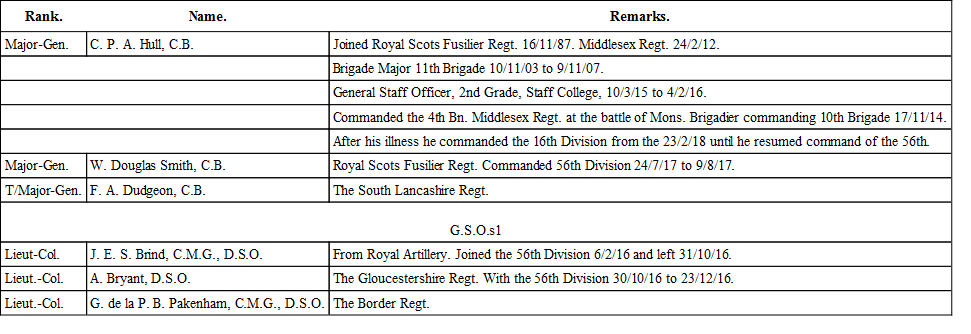
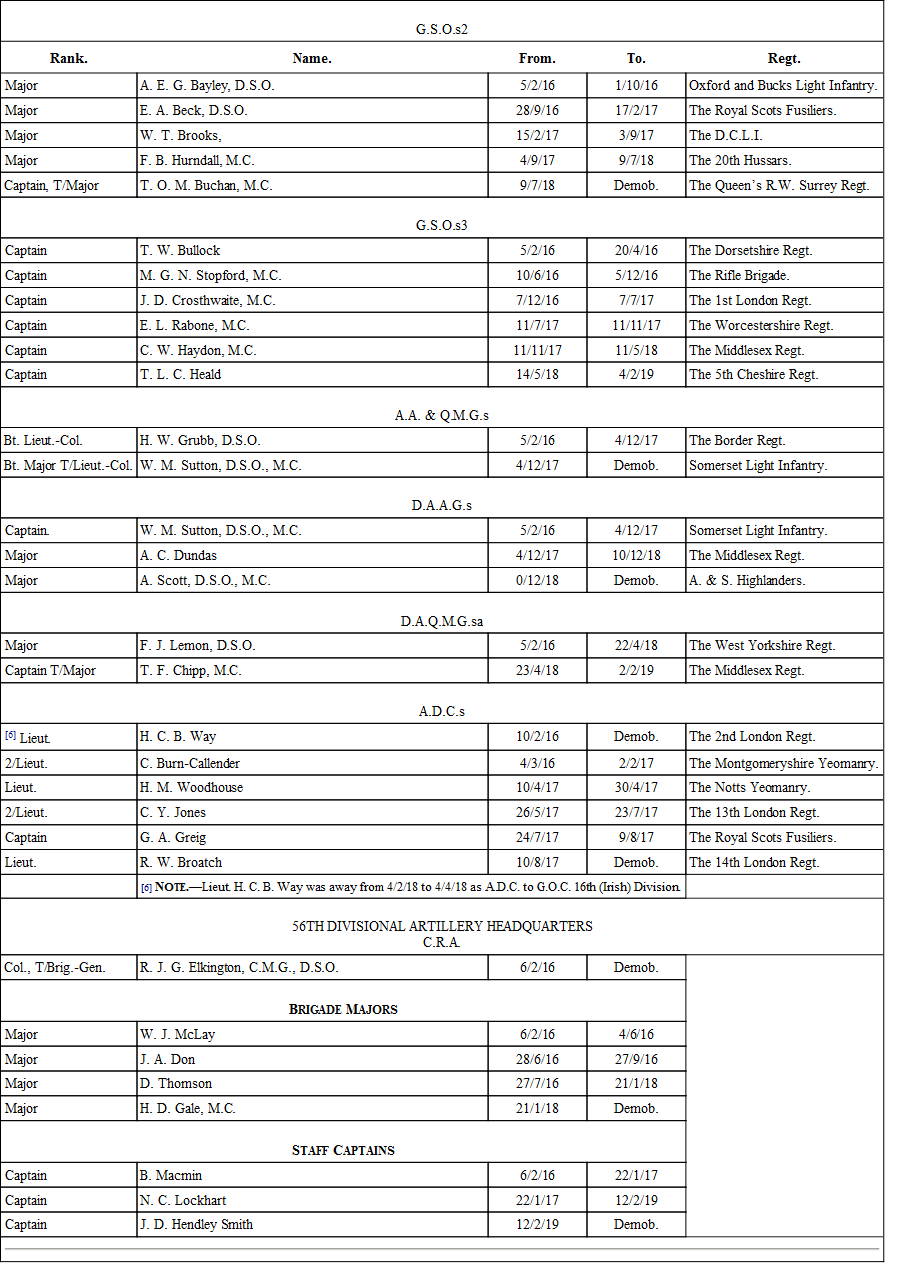
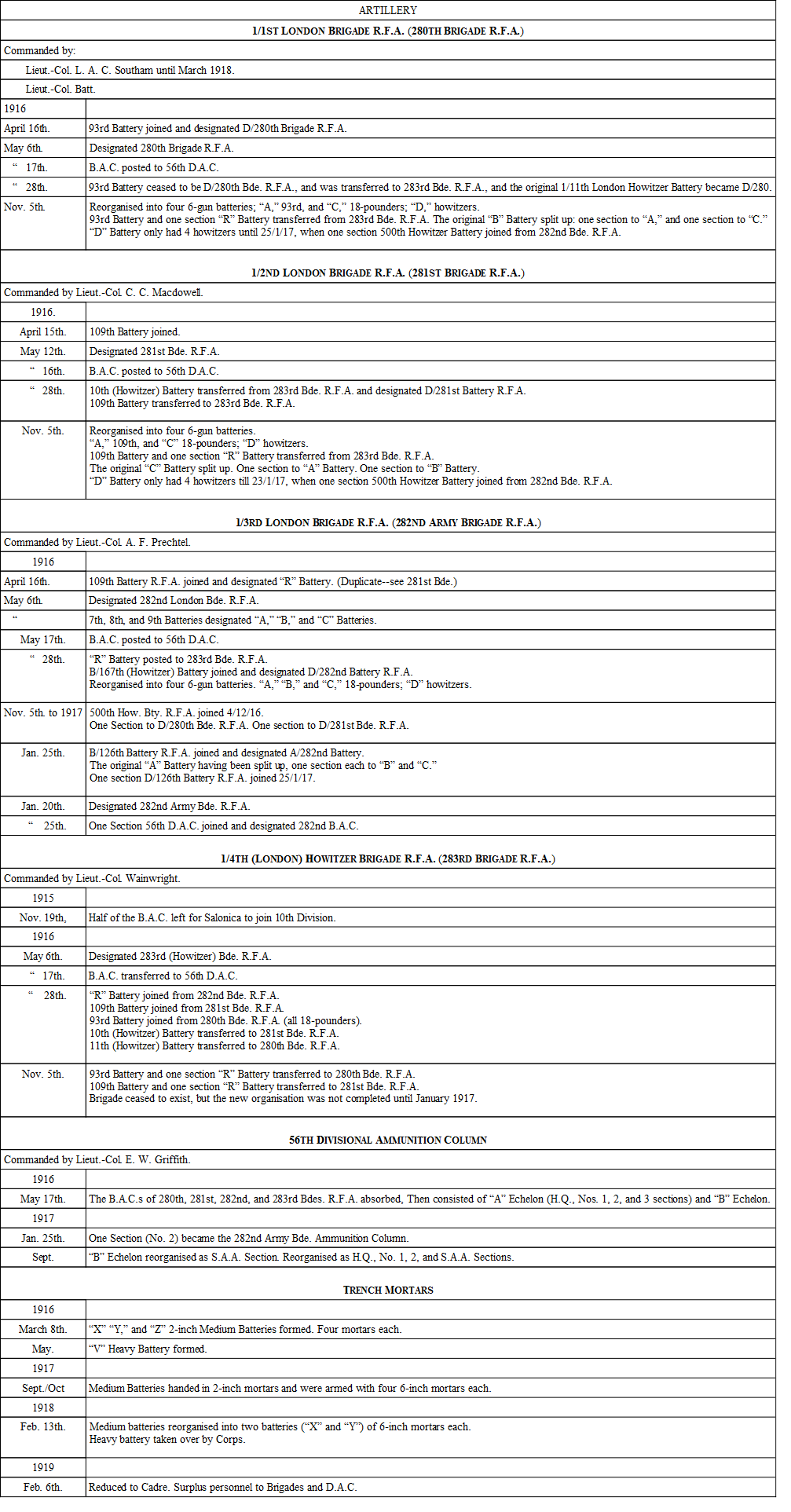
416th (Edinburgh) Field Coy. R.E.
512th (London) Field Coy. R.E.
513th (London) Field Coy. R.E.
56th Divisional Signal Coy.
PIONEER BATTALION1/5th Bn. Cheshire Regt. (Earl of Chester’s)Commanded by:
Lieut.-Col. J. E. C. Groves, C.M.G., T.D., 14/2/15 to 21/2/18.
Major (T/Lieut.-Col.) W. A. V. Churton, D.S.O., T.D., 21/2/18 to end.
MACHINE GUN CORPS56th Bn. Machine Gun Corps formed on 1/3/18.(See Divisional M.G. Officers.)R.A.S.C. UNITS213th Coy. R.A.S.C.
214th “ “
215th “ “
216th “ “
Divisional Train commanded by:
Lieut.-Col. A. G. Galloway, D.S.O., to Sept. 1917.
Lieut.-Col. E. P. Blencowe, D.S.O., to May 1918.
R.A.M.C2/1st London Field Ambulance.
2/2nd “ “ “
2/3rd “ “ “
1/1st London Mobile Vet. Section247th Divisional Employment Coy. formed in May 1917
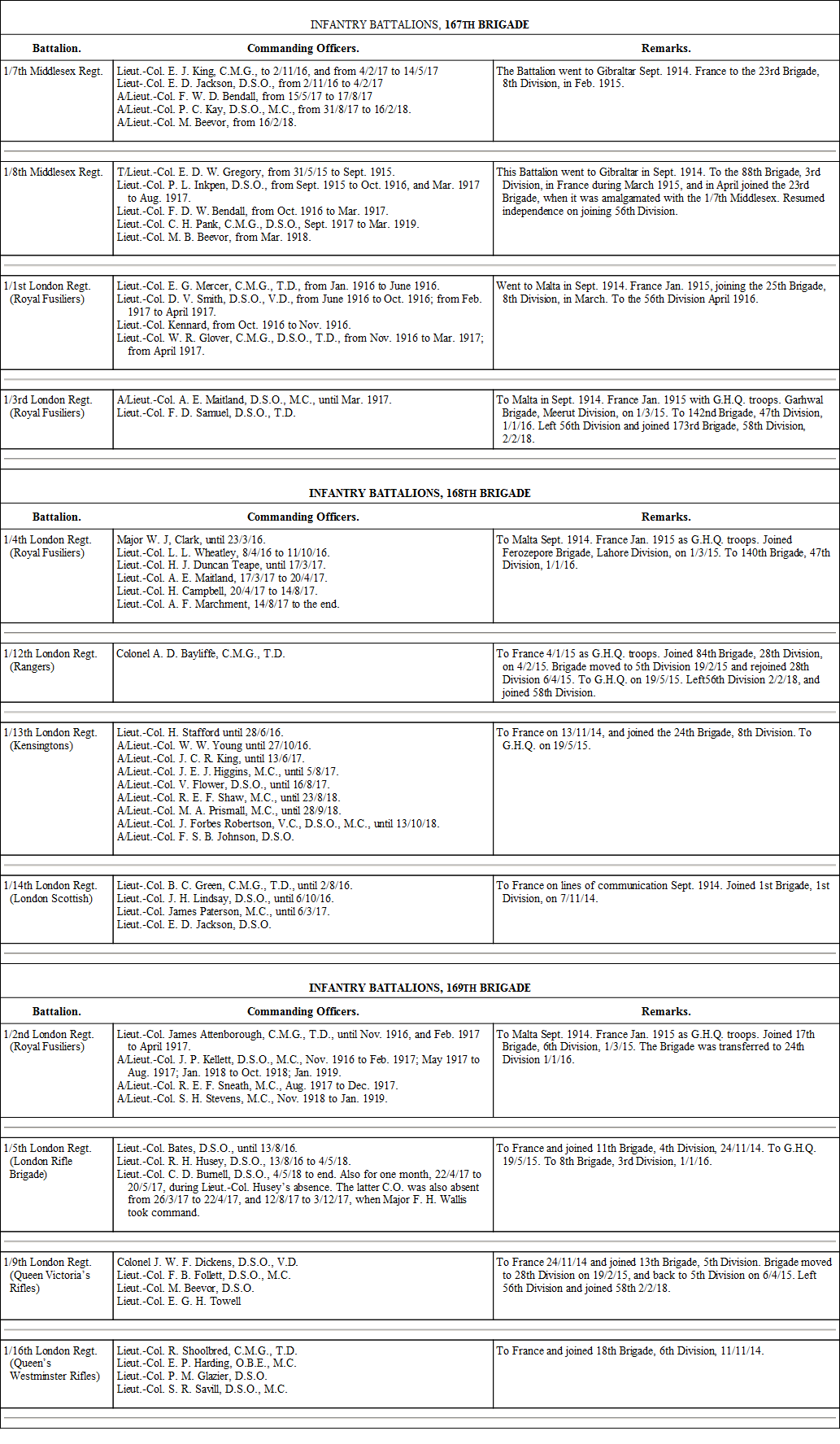
1
Appendix A.
2
General Headquarters, 1914-1916, and its Critical Decisions—Gen. von Falkenhayn.
3
My War Memories, 1914-1918, Ludendorff.
4
My War Memories, 1914-1918.
5
My War Memories, 1914—1918.



